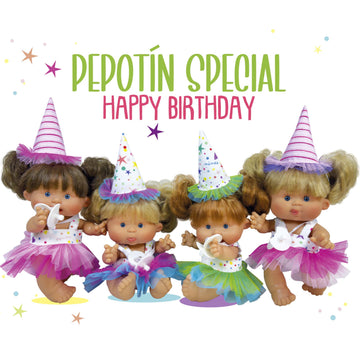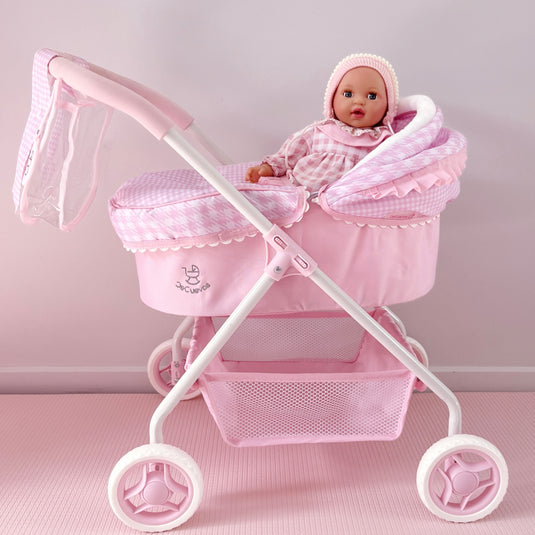3 Easy Facts About Dolls And Accessories Explained
3 Easy Facts About Dolls And Accessories Explained
Blog Article
Not known Incorrect Statements About Dolls And Accessories
Table of ContentsFascination About Dolls And AccessoriesWhat Does Dolls And Accessories Do?The 10-Minute Rule for Dolls And AccessoriesEverything about Dolls And AccessoriesGetting My Dolls And Accessories To Work8 Easy Facts About Dolls And Accessories DescribedFacts About Dolls And Accessories Uncovered
When dolls are consisted of in group play, children practice waiting, sharing, and listening to others' ideas. Whether they're acting to be a moms and dad, brother or sister, or good friend, children find out exactly how partnerships workhow to support others, address differences, and look after somebody else. These very early role-play experiences come to be the foundation for healthy and balanced friendships and connections later in life.Duplicating calming regimens with a doll (feeding, shaking, placing to bed) can assist youngsters feel tranquil and protected. Taking treatment of a doll can make a kid feel capable and positive.
Some Of Dolls And Accessories
When kids see dolls that reflect their race, heritage, and society, it strengthens a positive sense of identity. Dolls likewise introduce kids to cultures outside their very own, building considerate interest and empathy for others.
As Dr. Karyn Purvis, a leader in child development and trauma-informed treatment, as soon as said: This effective quote highlights exactly how play isn't simply funit's just how youngsters learn finest. The mind cables itself with rep. But when a youngster is involved, happy, and emotionally attached to an activitylike doll playthe mind enhances those links faster and more meaningfully.
Get This Report on Dolls And Accessories

Young boys require empathy, kindness, and imagination tooand doll play provides that. Dolls are frequently a child's first "pal," aiding them exercise relationships, develop communication skills, and really feel comforted.
Dolls And Accessories Things To Know Before You Get This
Through dolls that matter. Samantha Ong Samantha Ong is the creator of Joeydolls, a Canadian-based plaything brand on a goal to commemorate Eastern cultures with cheerful, comprehensive play. Influenced by her own experiences expanding up without social representation, Samantha develops dolls that help kids really feel pleased of who they are while sparking curiosity and empathy in others.
Playing with dolls motivates kids to chat more regarding others' thoughts and feelings, a research study has located. The study recommends that playing fictional games with dolls could help youngsters establish social abilities, concept of mind and compassion.
The Ultimate Guide To Dolls And Accessories
They were also much more most likely to address the dolls in the 2nd person, talking with them straight, whereas the characters on the computer system display they often tended to describe in the 3rd person. No distinction was observed between young boys and girls."Inner state language can suggest that a child is believing regarding various other individuals's ideas and feelings while playing with dolls," said Gerson.
Which they see language use in this respect is excellent verification of the hypothesis."Mardell included that the findings ought to use to any type of type of role-play plaything, instead than specifying to Barbies. "I would certainly take a broader view of what a doll is," he stated." [Maybe] any kind of things that the kid can spend a sense look at more info of other into a stuffed animal, an oven mitt that speaks to them, or perhaps a fictional buddy."Children typically start to reveal indicators of inner state language around the age of 4.
Unknown Facts About Dolls And Accessories
"It becomes important for making and maintaining relationships, and how they find out from their educators, and parents."The research study additionally found that the youngsters had raised brain activity in the posterior premium temporal sulcus (pSTS) region when they spoke as though their dolls had ideas and sensations. The pSTS area is thought to be associated with the growth of social and emotional handling abilities.
Childhood is not a static life phase; undoubtedly, the definition, significance and understanding of childhood are all based on modification. By the 19th century among the most extensive modifications was the relevance positioned on permitting children to experience "the care free pleasures" of childhood years with play tasks. Play was now taken into consideration to be a crucial element of an excellent childhood.
In order to completely recognize the meaning of play, one need to also comprehend the significance of the doll. However, dolls are a lot more than toys created to entertain young ladies. During the nineteenth century correct play activities were chosen to advertise intellectual, physical or emotional development. Dolls were specifically preferred because they were assumed to foster and nurture feminine qualities such as kindness, caring and empathy.
Dolls And Accessories for Dummies

It is only via archaeological investigations that researchers can wish to reveal and document the complete series of play experiences. Chronicling these experiences, and particularly the duty of dolls, is essential for presenting an extra total image of youth during the 19th century. Alarcn, Sara E - doll clothes., "Youngster's Play: The Function of Dolls in 19th Century Childhood Years" (2007 )
Report this page